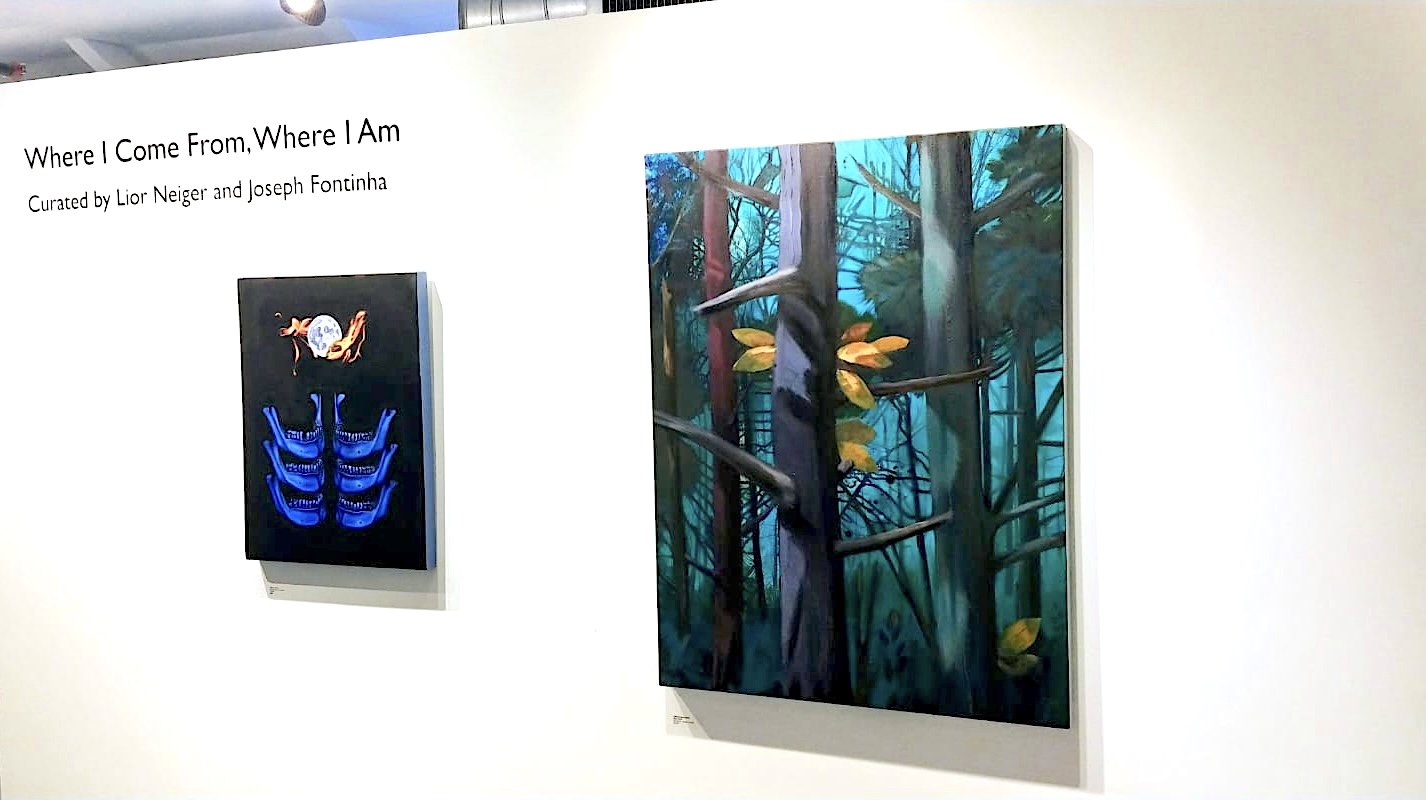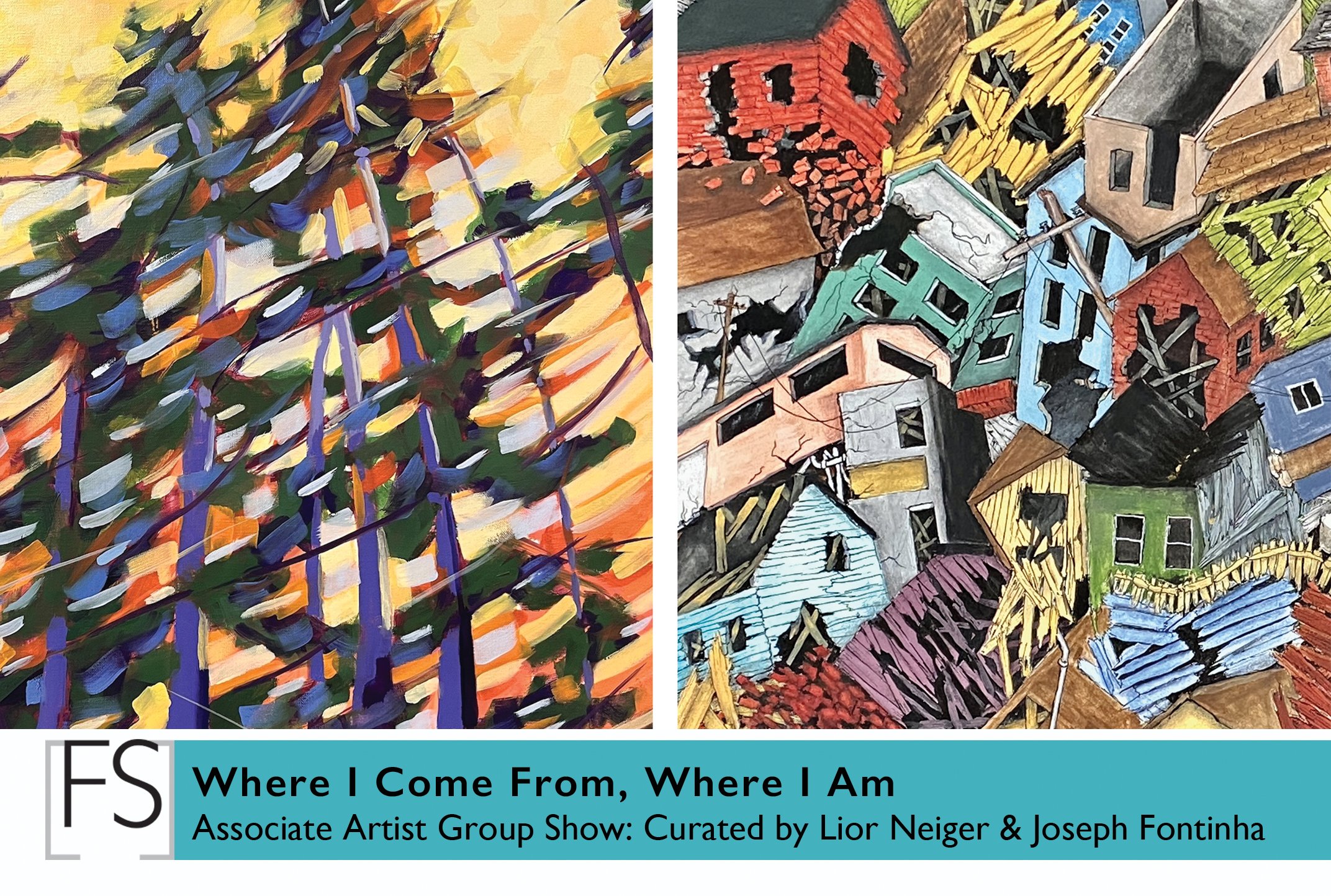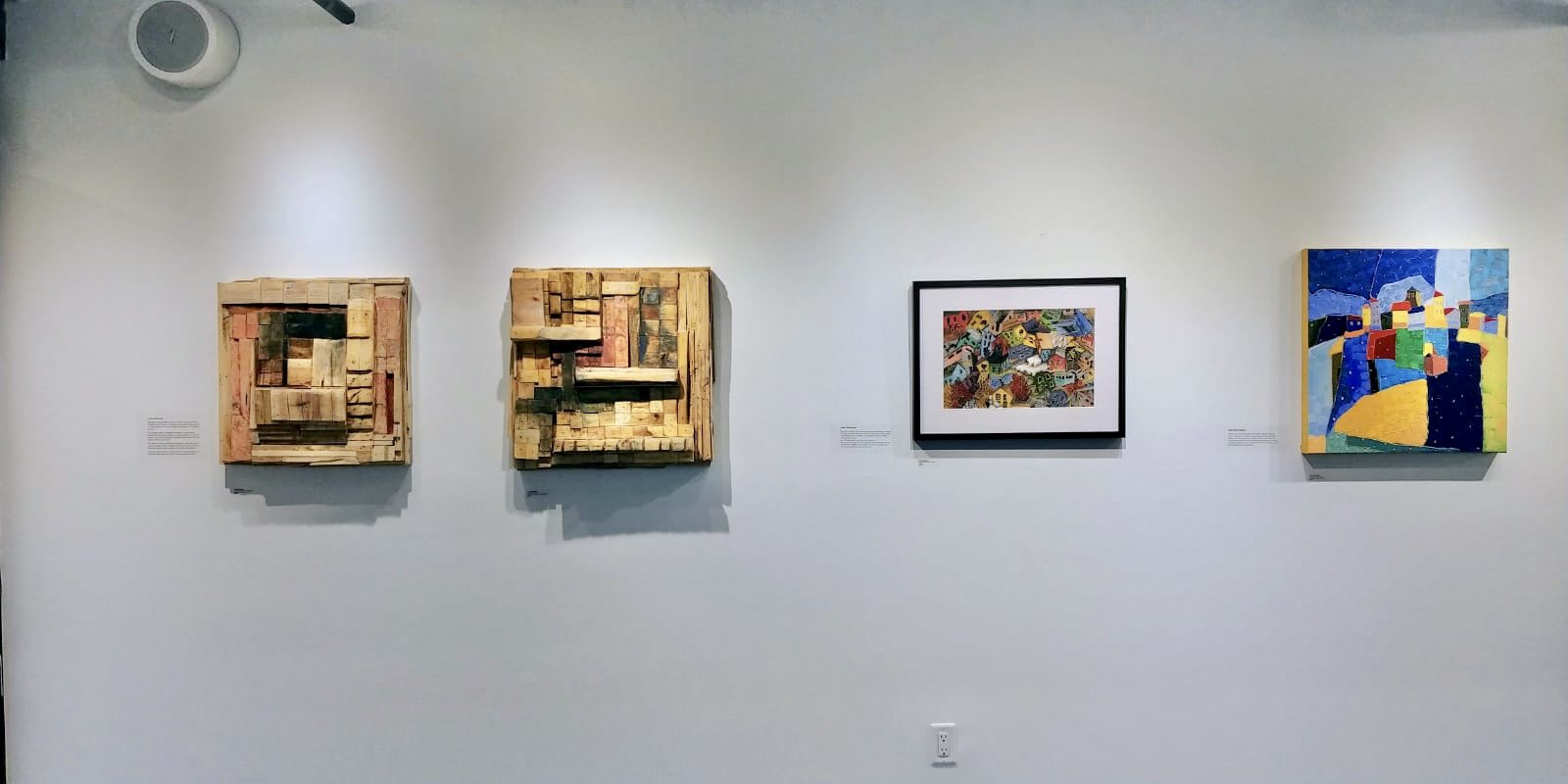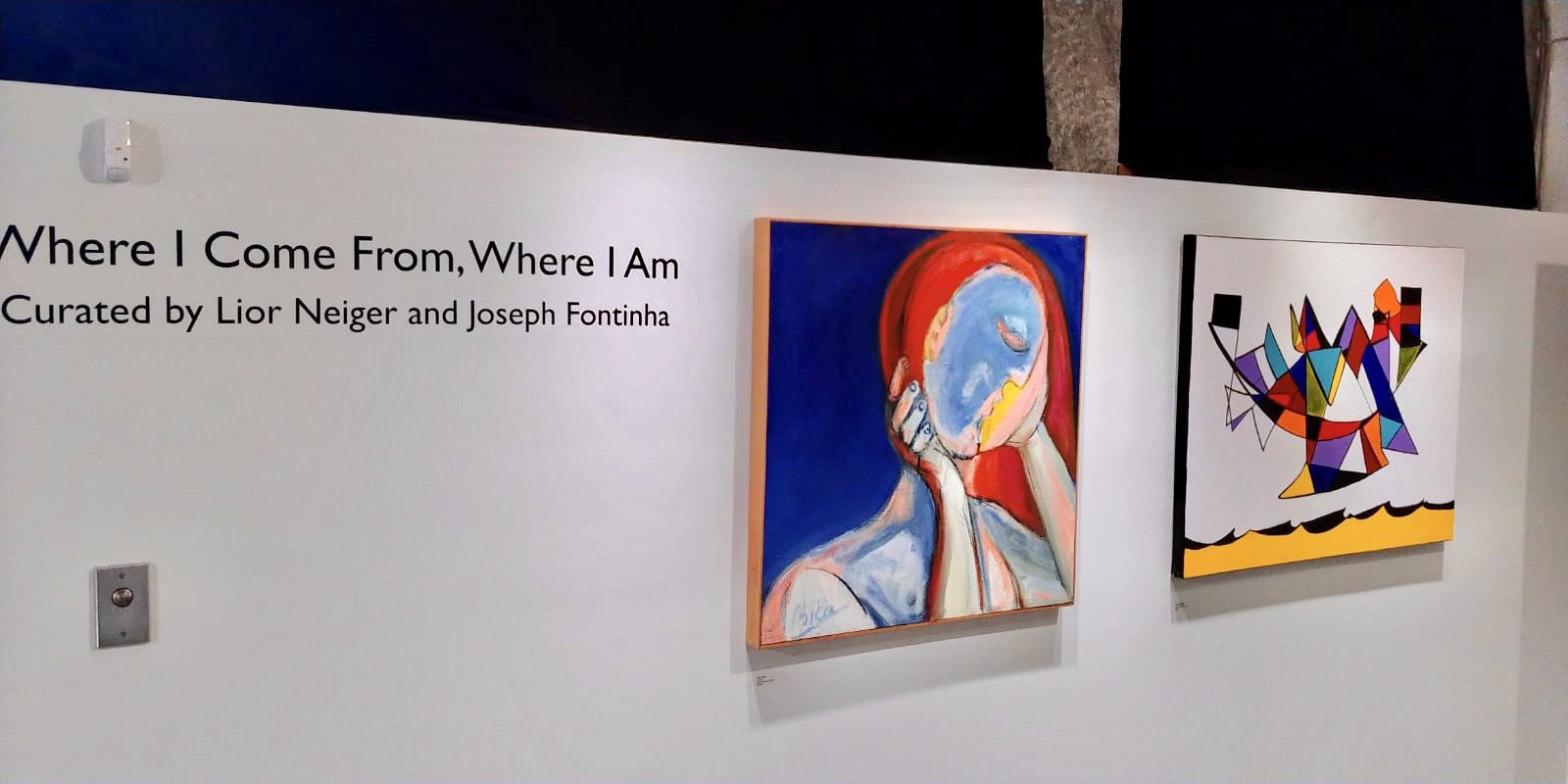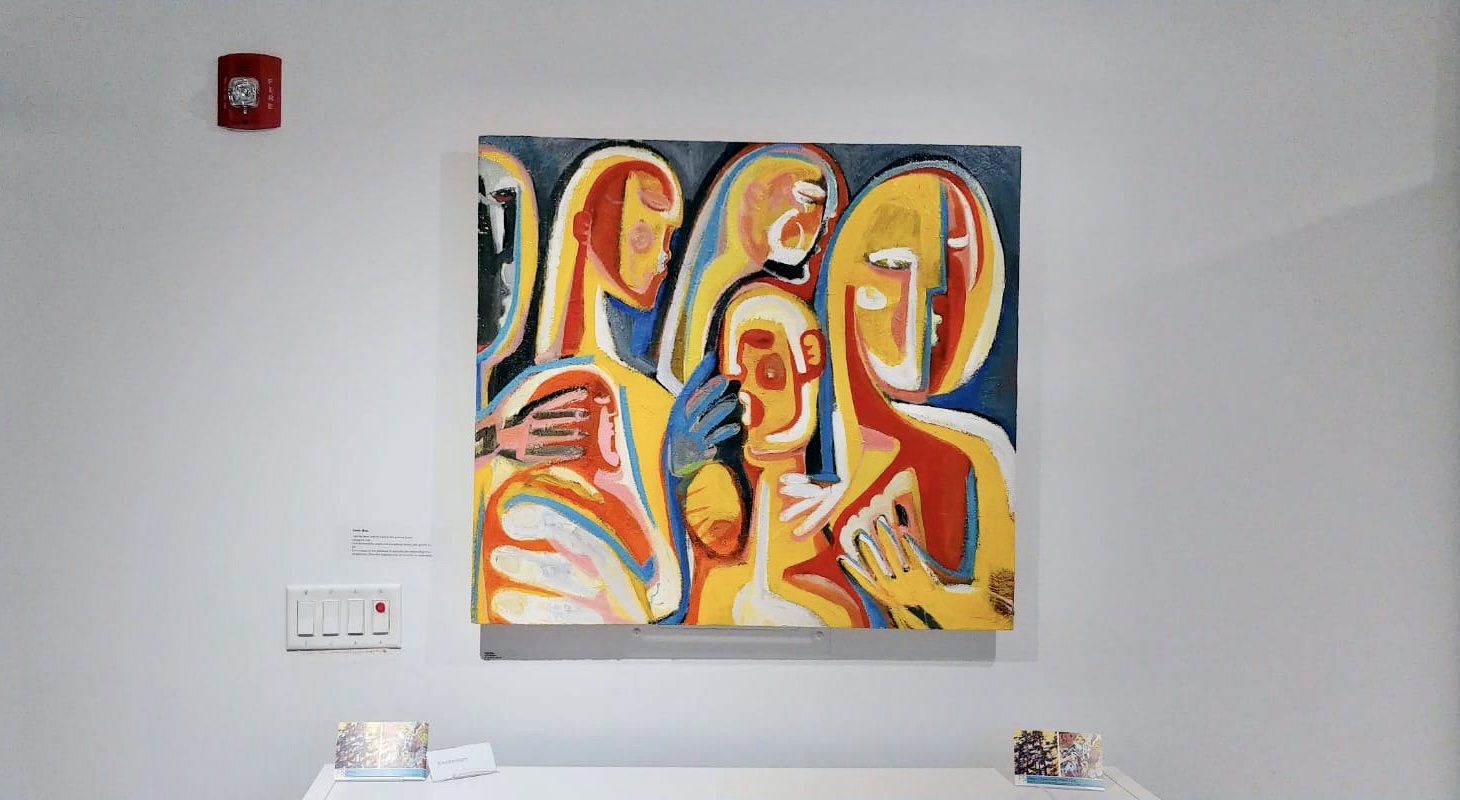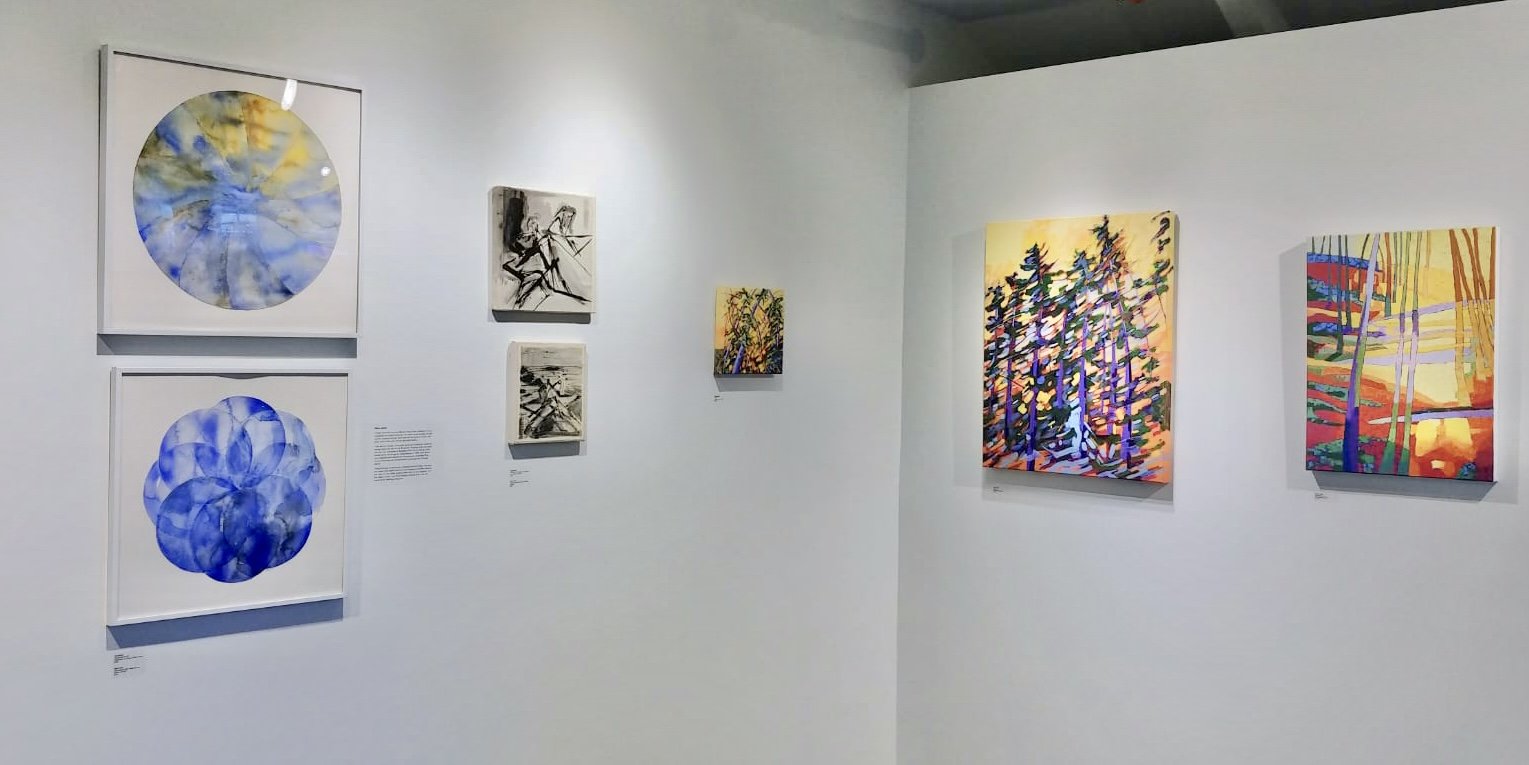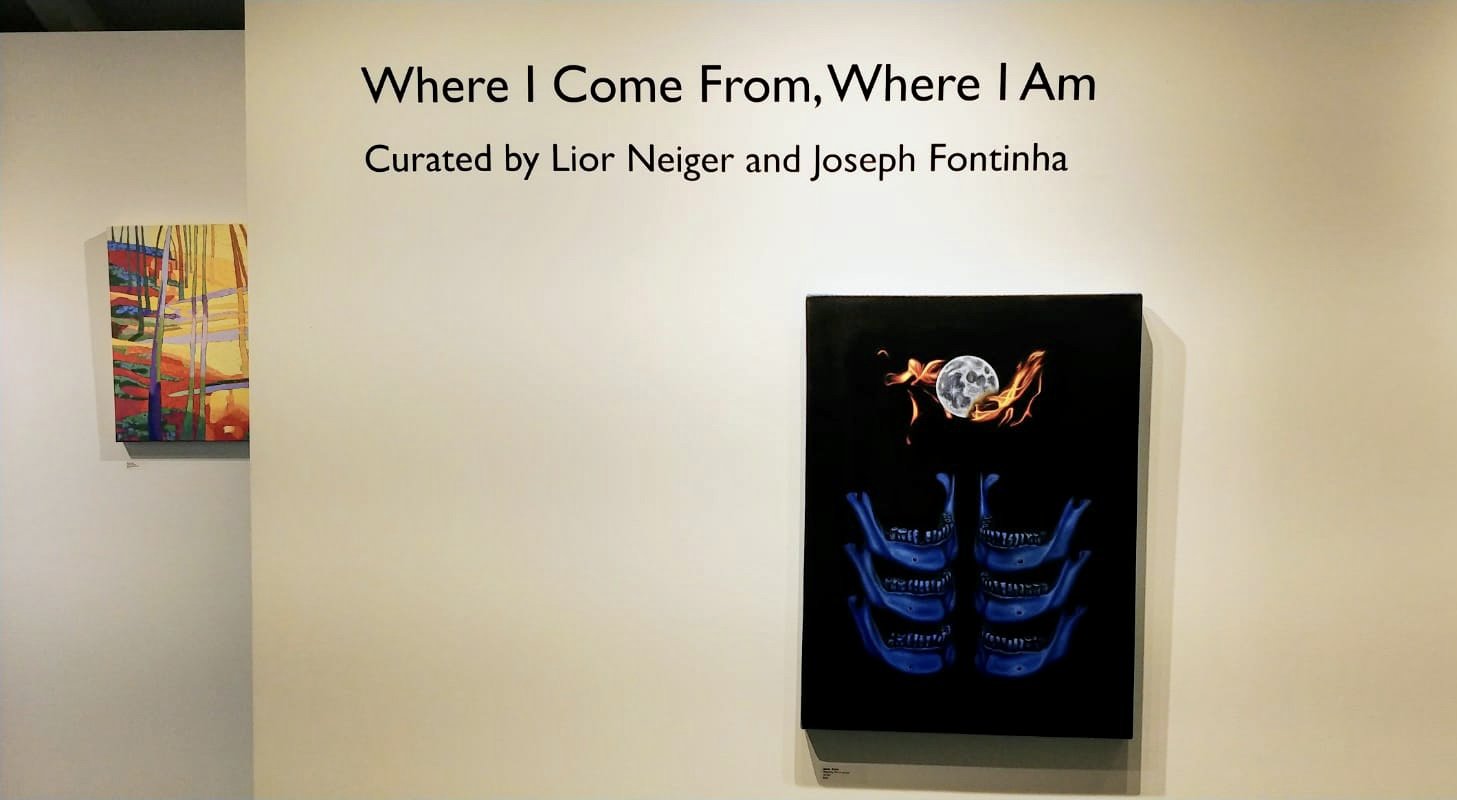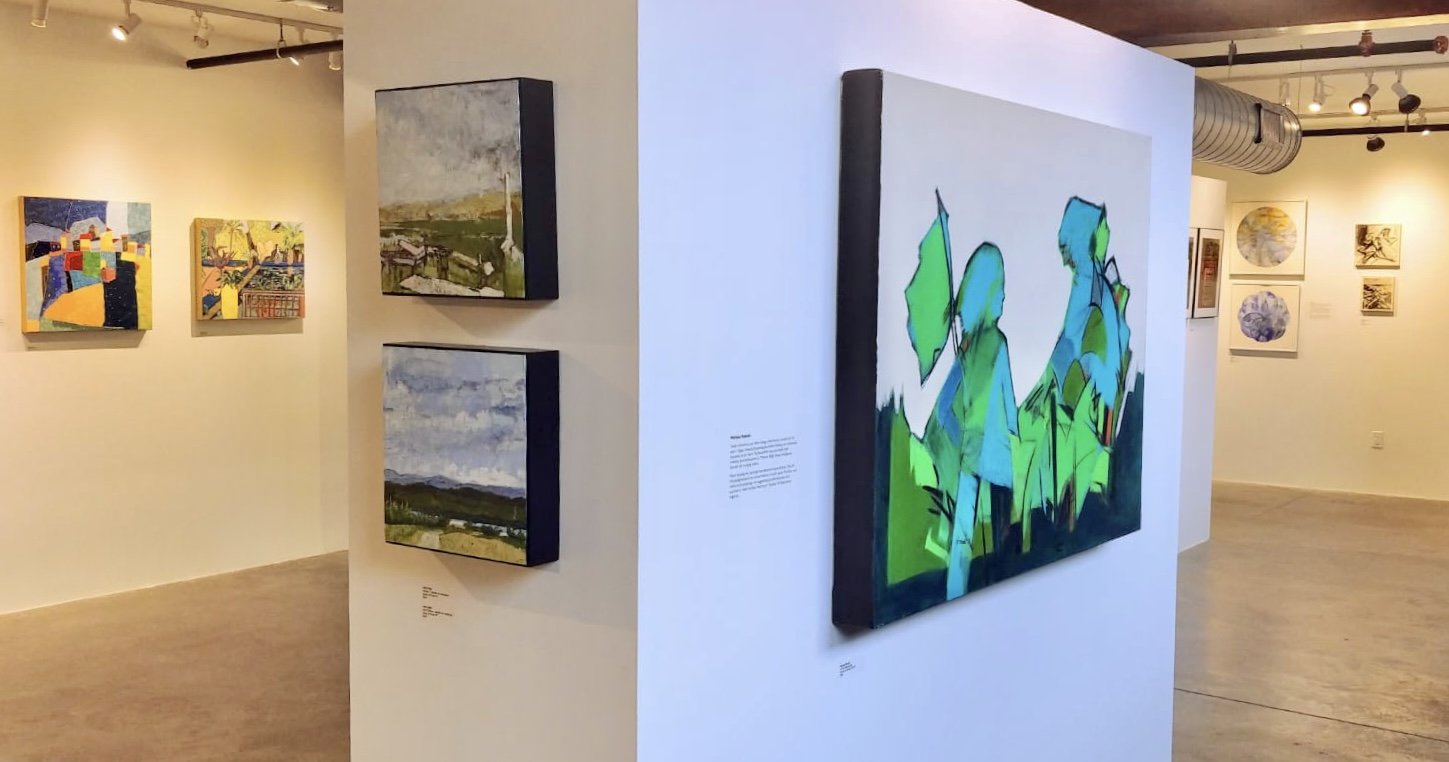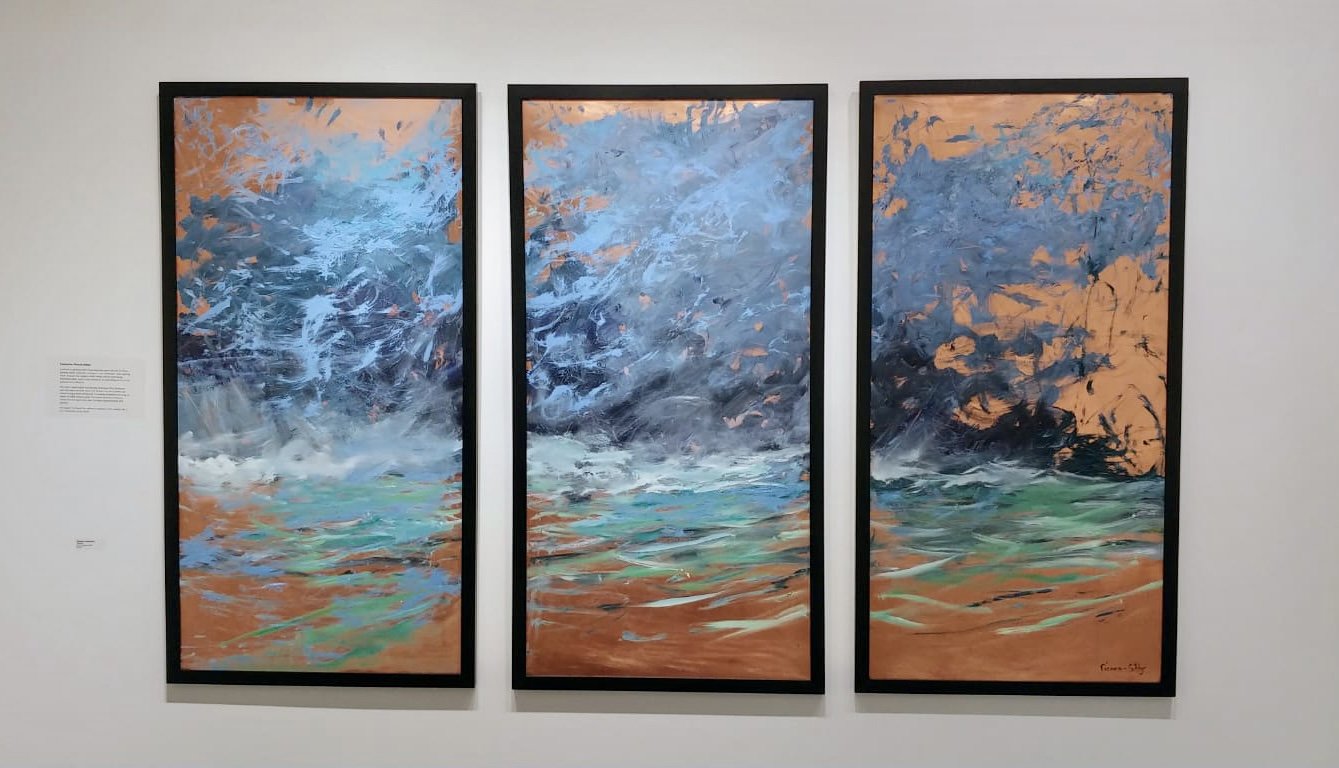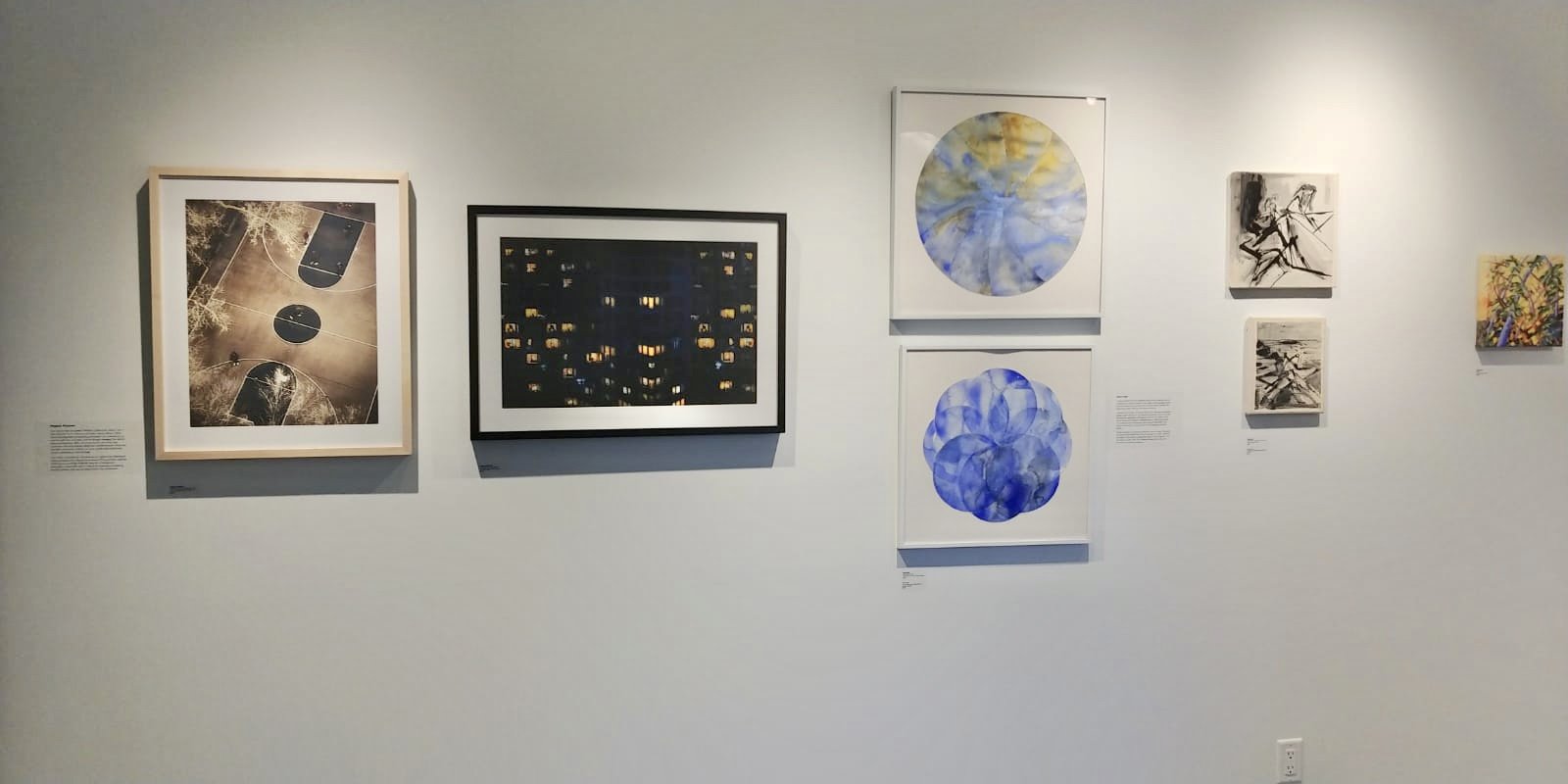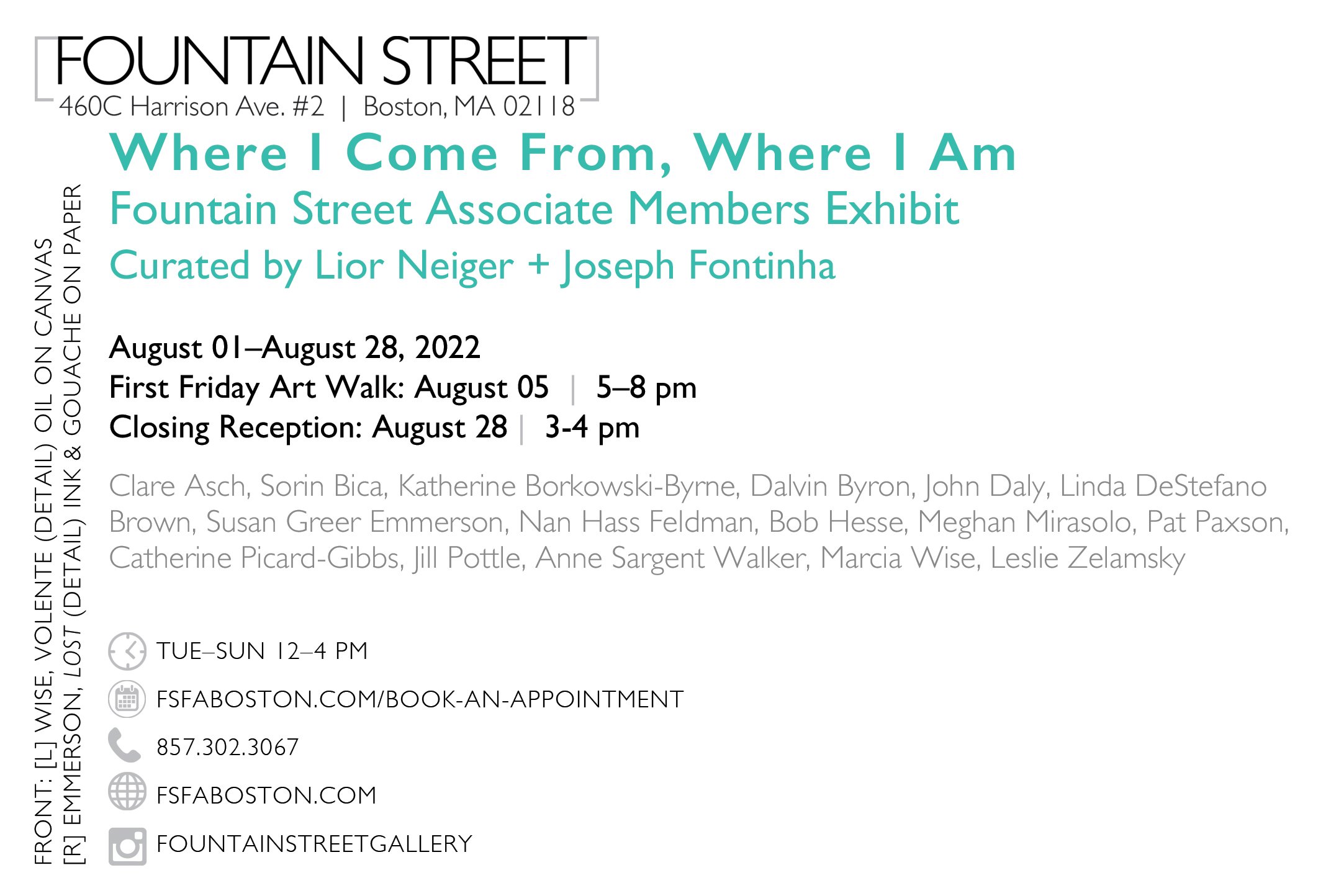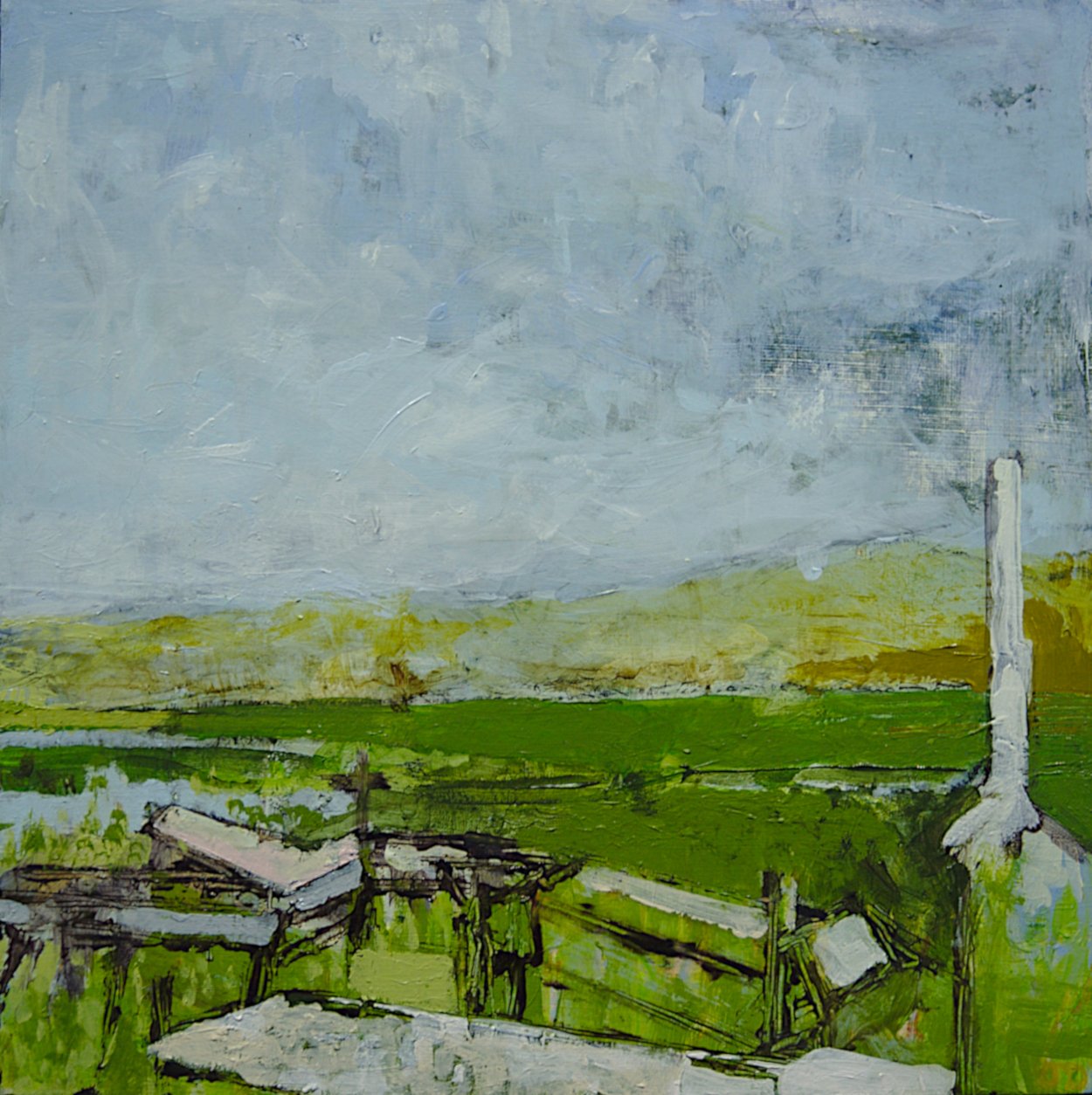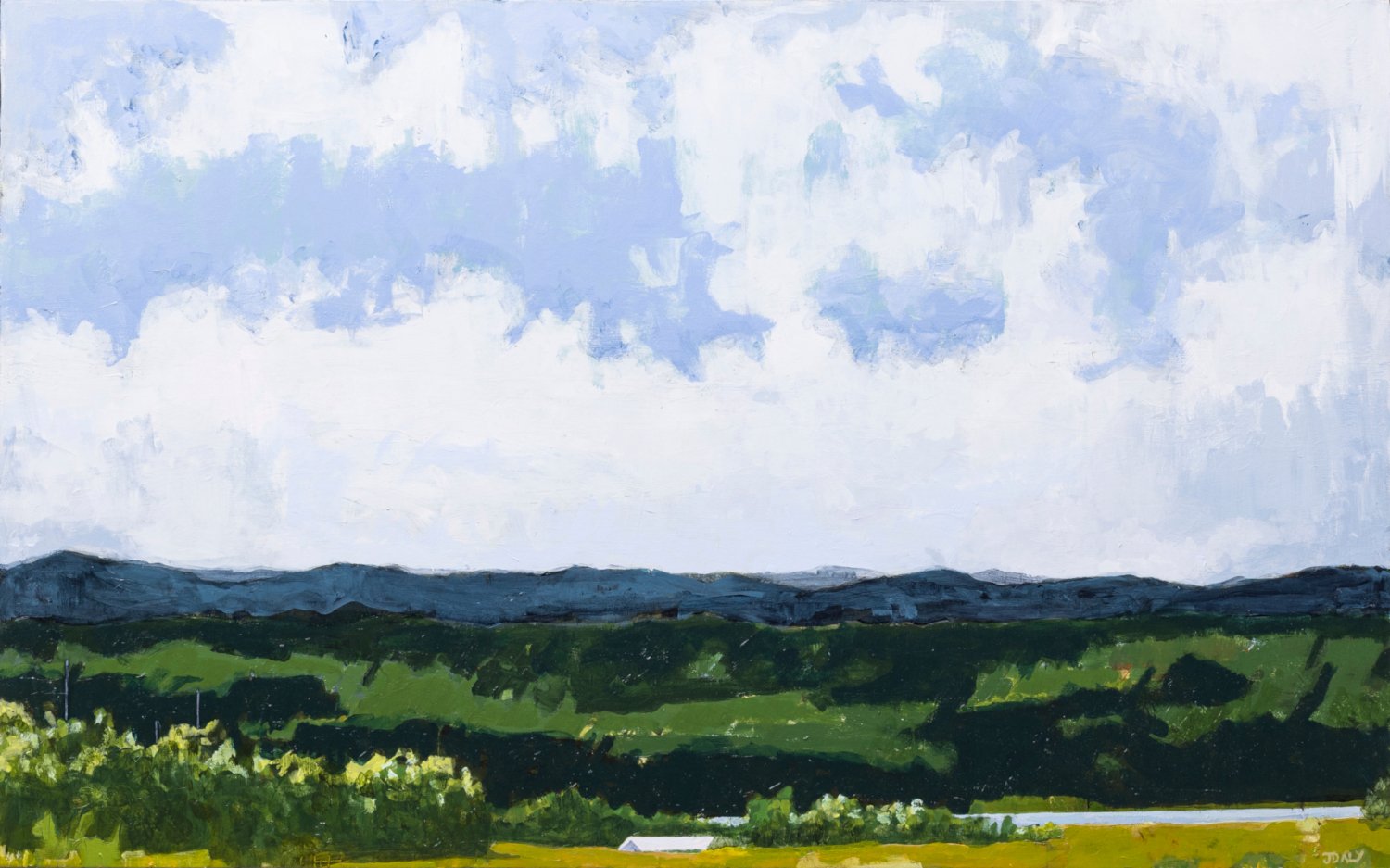WHERE I COME FROM, WHERE I AM
ASSOCIATE MEMBER GROUP SHOW
August 3-28, 2022
SoWa First Friday Art Walk: August 5 | 5-8PM
“Where I Come From, Where I Am,” features the work of the Gallery’s Associate Members. The show, which includes painting, photography, drawing, sculpture, and mixed media, illuminates the thematic questions on multiple levels—physical and personal journeys, the unfolding of life’s events, the evolution of one’s artistic practice.
They say “you can’t step into the same river twice.” We know that water flows, evaporates and returns as rain. We as artists are similar—moving from place to place, geographically and thematically, as we create new bodies of works in different media or with new techniques. We change, at times just a little and sometimes more dramatically, but traces of our old creative selves can be found in new things we make. The title of this show was inspired by Paul Gauguin’s famous painting “Where Do We Come From? What Are We? Where Are We Going?” (on display at Museum of Fine Arts Boston). The painting’s main theme, concerning the passage of time and the cycle of life, is echoed in this exhibition.
Exhibiting Artists: Clare Asch, Sorin Bica, Katherine Borkowski-Byrne, Dalvin Byron, John Daly, Linda DeStefano Brown, Susan Greer Emmerson, Nan Hass Feldman, Bob Hesse, Meghan Mirasolo, Pat Paxson, Catherine Picard-Gibbs, Jill Pottle, Anne Sargent Walker, Marcia Wise, Leslie Zelamsky
Anne Sargent
My work is about our complicated relationship to the natural world. We are part of the natural world and yet we act in opposition to its, and our best interest. We are at a precipice now. Unless we act quickly, environmental catastrophe looms. My images of forests- its fragmentation, loss of its carbon capture, loss of species and habitat -represent where I, and all of us come from, and where we are going.
Sorin Bica
I am my work and my work is the journey.
I paint because I must.
I am fascinated by people, the complexity, beauty and ugliness of life.
I am amazed by the multitude of reactions and relationships that we generate, about the happiness and sorrow that we experience.
Bob Hesse
Doors fascinate - what lies beyond, what may emerge, the appeal of simple forms, the possibility of a trompe .These three images, captured over more than half a century, including one at the Millennium. illustrate my journey in pursuit of this fascination.
Catherine Picard-Gibbs
I started oil painting when I was fourteen years old and I’ve been painting water scenes for as long as I can remember. I love painting water because this subject matter lends itself to portraying emotional states such as the anxiety of an impending storm or the calmness of a still pool.
My recent waterscapes incorporate techniques I’ve developed over the years. In many cases, I’ve thrown out the brushes and started using palette knives and I’m putting on gloves and using my hands to make unique marks. I’ve always painted on linen or canvas, but during the last year, I’ve been experimenting with painting on copper. I’ve found the reflective qualities of the copper ads a new dimension to my work.
Clare Asch
I love this theme for many reasons. First off, I love the painting by Gauguin. But also, my partner Paul Gwiazdowski wrote a poem/song on this subject. Here’s a few lines from Paul’s poem, “Bring light to the sway of the ocean/Bring light for to open heaven’s gate...”
Getting back to my personal take, I chose artwork from two different series. One is abstract and is a meditation on circles. Circles for me, relate to the passage of time and the seasons and how both time and the seasons revolve.
My other series deals with my own personal history. I was born in Hungary during the Soviet era. I distinctly remember seeing a giant red star on the Parliament Building, which we could see from our apartment in Budapest. With the crumbling of the Soviet Union and Hungary’s independence in 1989, these Soviet era sculptures and monuments were joyously dismantled. This series of drawings are loosely based on photographs of these events.
These drawings are purposely ambiguous and no longer represent the events that inspired them. In my drawing it is unclear whether the object in the center is being taken apart or put together or if the object is even a star. This drawing is meant to be raw and awkward; it’s meaning ambiguous.
Dalvin Byron
Throughout history, most cultures have been captured by the significance and mystery of dreams. Records and artifacts from ancient civilizations like Mesopotamia, Egypt, and Greece show that dream interpretation was considered to be very important to those civilizations.
In the modern era, Sigmund Freud and Carl Jung hypothesized that dreams reveal the very nature of who we truly are - Freud proposing that dreams represent desires and Jung proposing that dreams contain invaluable information about the self.
These paintings are based on the interpretation of the artist’s dreams. They are part of an ongoing series that attempts to find traces of identity and memory in the imagery that originated from the unconscious mind.
Jill Pottle
We are all so confused and disconnected with the world these days, particularly our relationship with nature. I’ve always tried my best to hold onto literal reality these days with all that is going on. I been schooled to paint what I see, so I thought. My training tells me to translate the true vision of the world...but do we even know what that is? I certainly don’t anymore.
My work has evolved from painting accurately with an academic eye but now the ever our evolving world, (ever so troublesome), my attention has been drawn to what I call: “in between” worlds. When we look into a window and see a reflection but at the same time see objects on the other side... there is a space. The reflection is coming from somewhere else and is not related to what is inside or is it? I wonder about this reflected world whether it is another place to go and find myself in deep exploration of this universe. It s a safe place to go and helps me reconnect with nature. It reminds me to breath, observe and delve into the beauty of everyday things that are around us. From bees to flowers to weather to dirt.
John Daly
My work as a landscape painter is an effort to understand and share the essence of place. In the iterative process I employ, this understanding evolves from painting to painting, leading to shifting vocabularies of color, line, form, and composition. The paintings on display here illustrate the evolution that results from this investigatory process.
Katherine Borkowski
My lifelong education in art has led me on a mission to illustrate the enduring significance of painting and, in particular, Abstract Expressionism.
I painted a tribute to Jackson Pollock, titling my work, “Calling Jackson.” I use marks, texture, and color to create something new and not to copy nature, as Jackson declared, “I am nature.” It is the process of making a painting that interests me the most and discovering something new that feels alive to the senses. It is the “not knowing” what the painting will look like that makes each painting a new journey.
I live with thoughts of my cosmic connection to the universe. I painted “Entanglements” thinking of how physicists have proven that two particles in the universe are inextricably linked and copy each others movements even if they are millions of miles apart as we are also connected by particles in our bodies to each other and to everything within the whole universe.
I recently made a decision to use and freely reinterpret famous paintings within my painting oeuvre. I picked Duchamp’s “Nude Descending a Staircase” as I enjoy Duchamp’s allowing himself to contradict himself and to challenge accepted values. I chose this particular piece as I found the dynamic movement within to be interesting and I’m attracted to the almost “over-all” composition of the piece. I loosely copied the painting but added brighter colors and changed many of the forms. I allowed myself to contradict myself by not continuing to add paint until it could be considered an Abstract Expressionist Piece. I titled it, “Duchamp Descending.”
I come from Ukrainian people who emigrated from Eastern Europe before WWI, and grew up with adults whispering how badly the Soviets treated the Ukrainian relatives in the old country, taking away their land and banning their language and religion. It is heart wrenching for me now to see the Russians attacking Ukraine in the most brutal manner. I wanted to do something so I painted “Sunflowers for Peace, ”in yellows and blues, the colors of Ukraine. The sunflower is the national flower of Ukraine and now a symbol of resistance. This was a departure from my usual abstract expressionist style. I had archival prints made to use for a fund-raiser for humanitarian aid.
Leslie Zelamsky
Dwelling (noun): A shelter (such as a house) where people live.
Dwelling (verb): To think or talk about (something) repeatedly, for an extended period of time. Generally associated with a negative thought.
The Dwelling Series investigates dwelling as a noun, where I explore the importance of home as a grounding force in my life; and as a verb, which describes a mind that thinks about the same subject over and over again.
My creative process is additive and reductive. I layer, stack, grind and paint, using common building materials. The result is work in which structural solidity coexists with warmth and softness.
The work exists because of my inclination the eyes, mind and heart.
Linda DeStefano Brown
Through my photography, I search for hidden meanings beyond the visual world surrounding us. Creating images that transform the ordinary into an exploration of familiar feelings, thoughts, fantasies, and memories brings solace to my own journey. For me, time has become an idea that past, present and future are commingled into a single cerebral space. Thoughts of the past along with anticipations of the future are ever present in our current existence. In addition to this merging of time is the question of the space in which we find ourselves—breaking through barriers and stumbling blocks, floating through an imaginary world, envisioning a whimsical reality of the mind. All in the pursuit of understanding ourselves, our world, and those with whom we share this journey.
Marcia Wise
My inspiration has always been ignited by the beauty of our natural world. My older work, “Light Promenade” and “My World,” tell of ‘where I come from’ while my newest work, “Volente” and “Partita,” represent ‘where I am’ for this Associates Exhibit. My goal is to project the visual vibrations of energy, light, excitement and enthusiasm through my intuitive and colorful translations of beauty.
Meghan Mirasolo
I am not sure how to answer, "Where I come from, where I am." Time and place are ever-changing. Nothing feels particularly permanent. The world I knew yesterday is different from the world I'm waking up in today. And tomorrow will bring new transformations. While this inevitable continuum unfolds, I'm behind the camera, watching it happen. Yet photography alone can never capture the memories and emotions attached to certain times and places. It's difficult to document the sensation of a moment slipping away or the feeling a certain location can conjure. In the work I've submitted for the show, an atmospheric, dreamlike feel is created by repeating and layering multiple photos. There is a sensation of moving from place to place, surrounded by unfamiliar locales if only for a moment. The images provide a glimpse of settings that evoke fading memories and emotions. They are reminders of a place and time that slipped away.
Nan Hass Feldman
These works are more abstract then before. Partially they are places I traveled to in reality a few years ago (Morocco & Chile) before my illness and since my motor control is compromised.
I enjoy seeing myself as a bird remembering experiences or being in a place only hinted at by reality. These works represent me now, full of whimsey, hope, and fantasy.
Patricia Paxson
I lived in America until after college, then lived in London for 40 years. I began drawing & painting just before leaving and continued education in art there. My focus then was on people, their interests and interactions: in "Waters Edge" tense, ambiguous, blurred and merging colors.
More recently, my paintings have become more abstract. One of the backgrounds is my varied interest in outer space. The lines and colors in the paintings are suggesting possible episodes and activities in other worlds, resulting in "puzzles" of what those might be.
Susan Greer Emmerson
These past few years have, for most of us, profoundly changed our relationship with physical space, especially the formerly safe space of home. Homes for some have become unbearably confining, for some uncertain or nonexistent and for others a desolate empty place to grieve. Natural and man-made disasters have destroyed others, leaving the inhabitants only sad scraps and distorted debris.
My work considers this emotional and physical devastation created by the loss of home. Home is where our most basic human needs - nourishment, rest and safety - are supposed to be met. When these are lost we are set adrift, grieving for security and permanence. After such a loss, the lives of the people involved are permanently divided into the Before and the After, scarred by that stark line that will ever define the rest of their lives.

